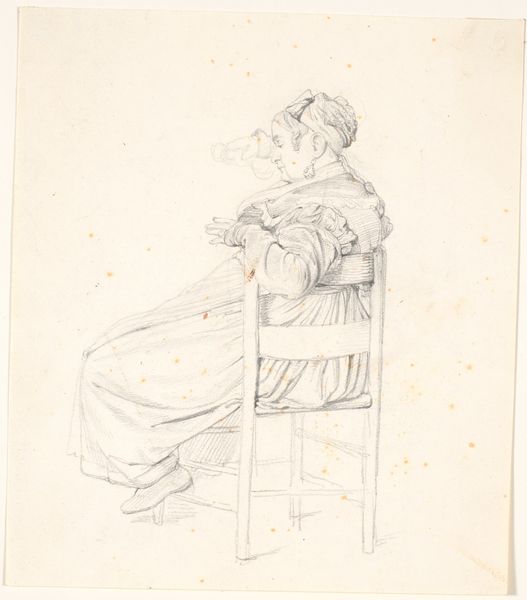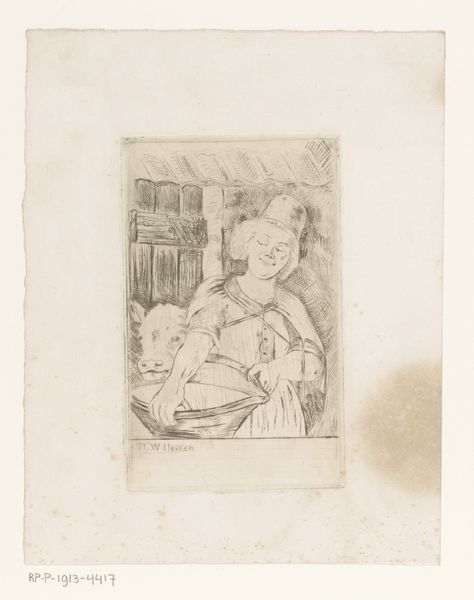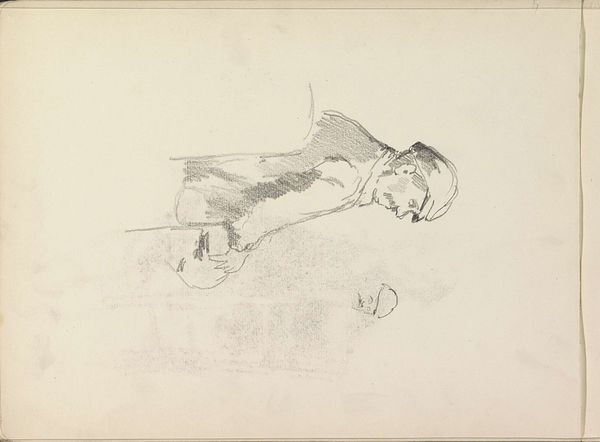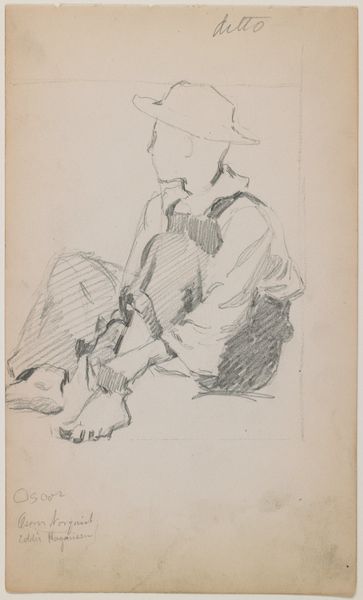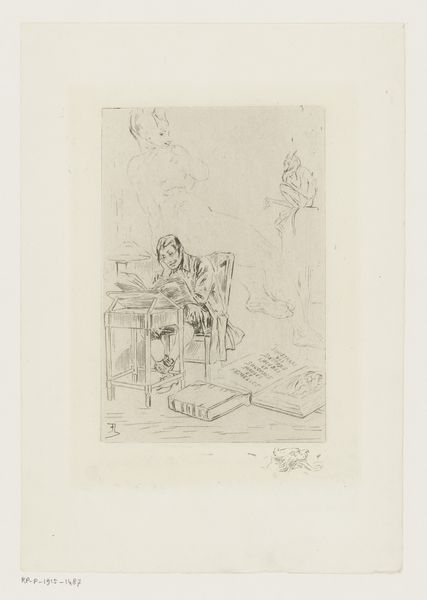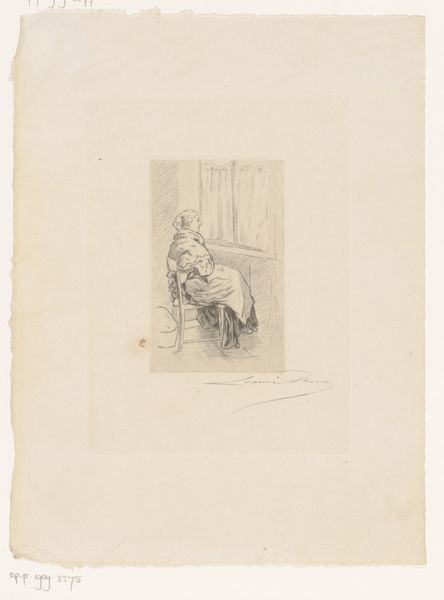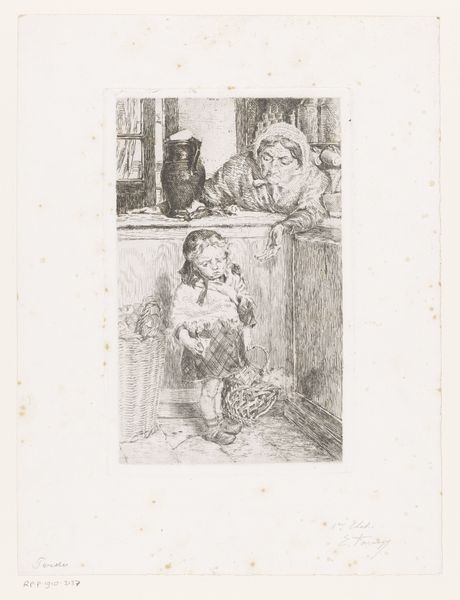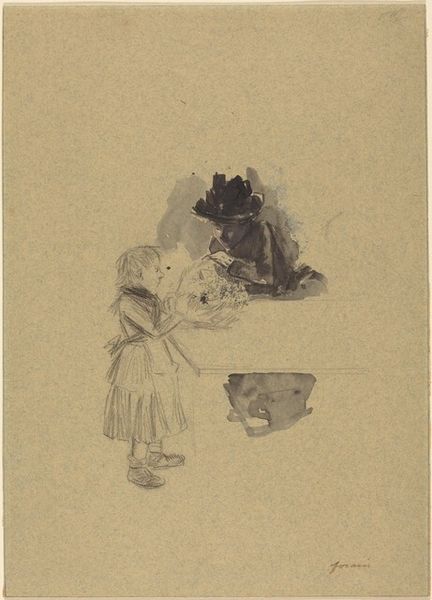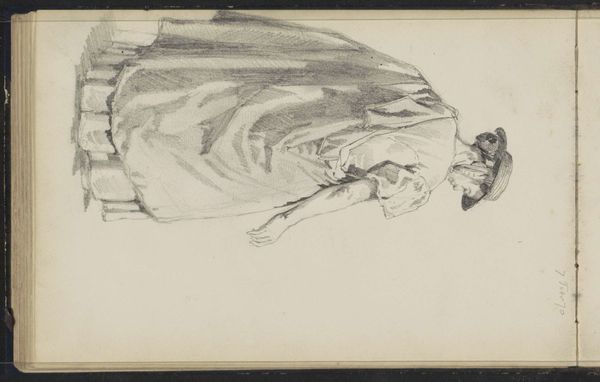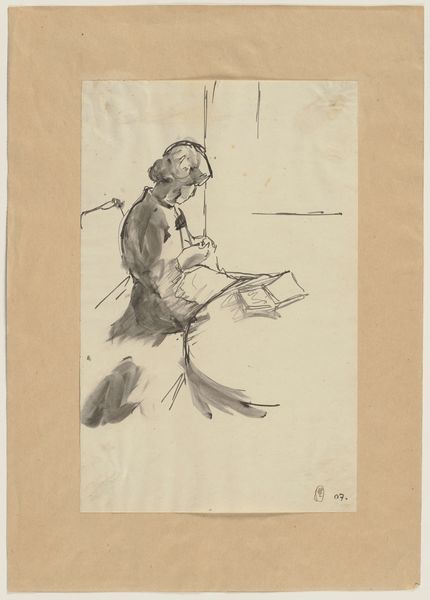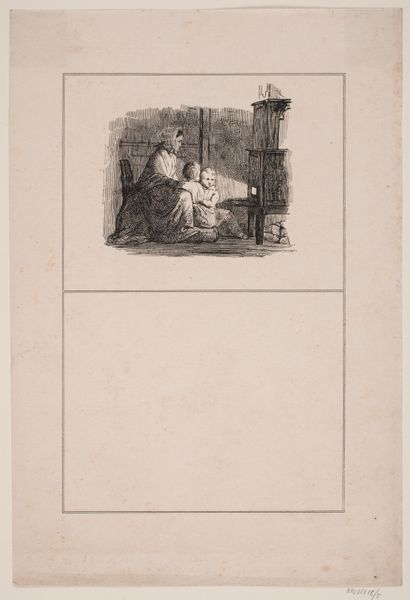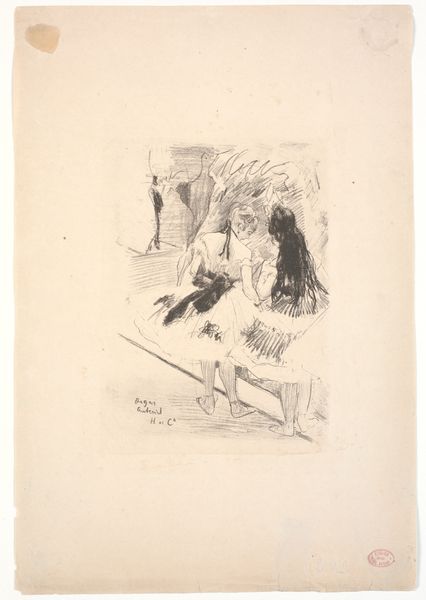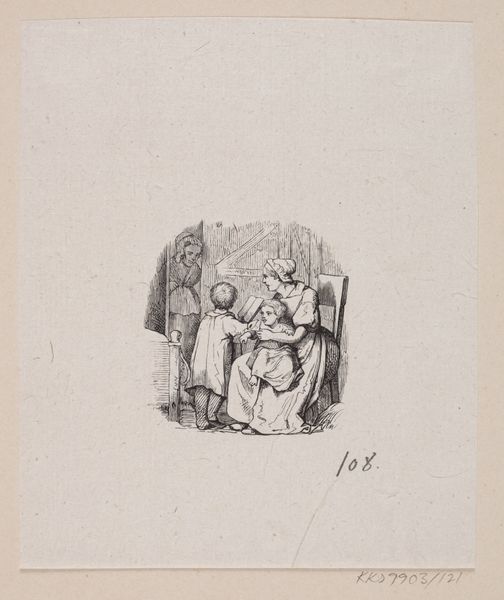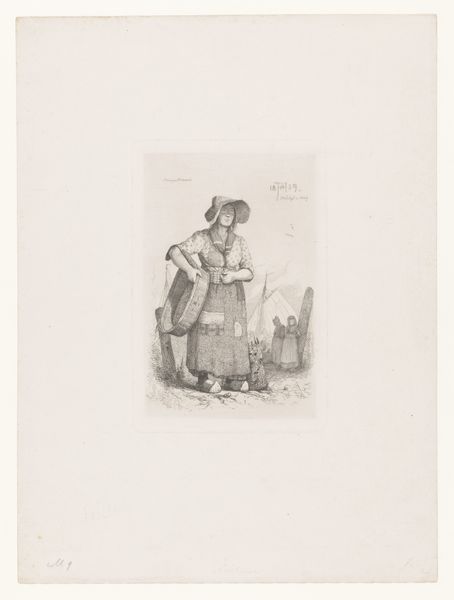
drawing, print, paper, pencil, engraving
#
portrait
#
drawing
# print
#
pencil sketch
#
figuration
#
paper
#
pencil drawing
#
pencil
#
watercolour illustration
#
engraving
Dimensions: 57 × 54 mm (image); 178 × 125 mm (sheet)
Copyright: Public Domain
Editor: So, this is "Le Gamin à L'orvet," possibly from 1908, by Auguste-Louis Lepère. It looks like it's done with pencil and engraving on paper, currently residing here at the Art Institute of Chicago. It gives off such a melancholic feel, doesn't it? The boy seems withdrawn. What do you see in this piece? Curator: What I see is a complex representation of childhood and labor, ripe for deconstruction. Lepère positions the boy, not in playful activity, but almost posed, bearing a certain world-weariness, wouldn’t you agree? Consider the social context. At the turn of the century, child labor was rampant, often romanticized yet deeply exploitative. Is Lepère complicit in that romanticization, or is he subtly critiquing it? Editor: That's interesting. I hadn't really thought about the labor aspect, but now I see it in his posture and in that…stillness. The setting also feels...staged, somehow. Curator: Exactly. The table and jars could be read as symbols – perhaps alluding to a family trade. Does this influence our understanding of his social standing? The title refers to the sale of "Orvet," or violets, so is this about child vendor narratives prevalent in the period? Are we looking at social commentary disguised as a sentimental portrait? Editor: I see what you mean. It’s much more than just a portrait of a kid. There is also a lot of space around the central subject. Curator: Indeed. It suggests the boy's marginalization, creating a visual metaphor for his societal position. Are we positioned as viewers to admire or critique? Consider how our gaze reinforces or challenges established power dynamics. Editor: That really changes how I see the artwork now. It’s not just a depiction; it’s a statement about the social realities of children at the time. Thanks. Curator: Precisely. By examining the socio-political climate, we can unveil the artwork’s capacity to spark discussions about class, opportunity, and representation, rendering the image ever so relevant. It shows art can encourage crucial discourse.
Comments
No comments
Be the first to comment and join the conversation on the ultimate creative platform.
